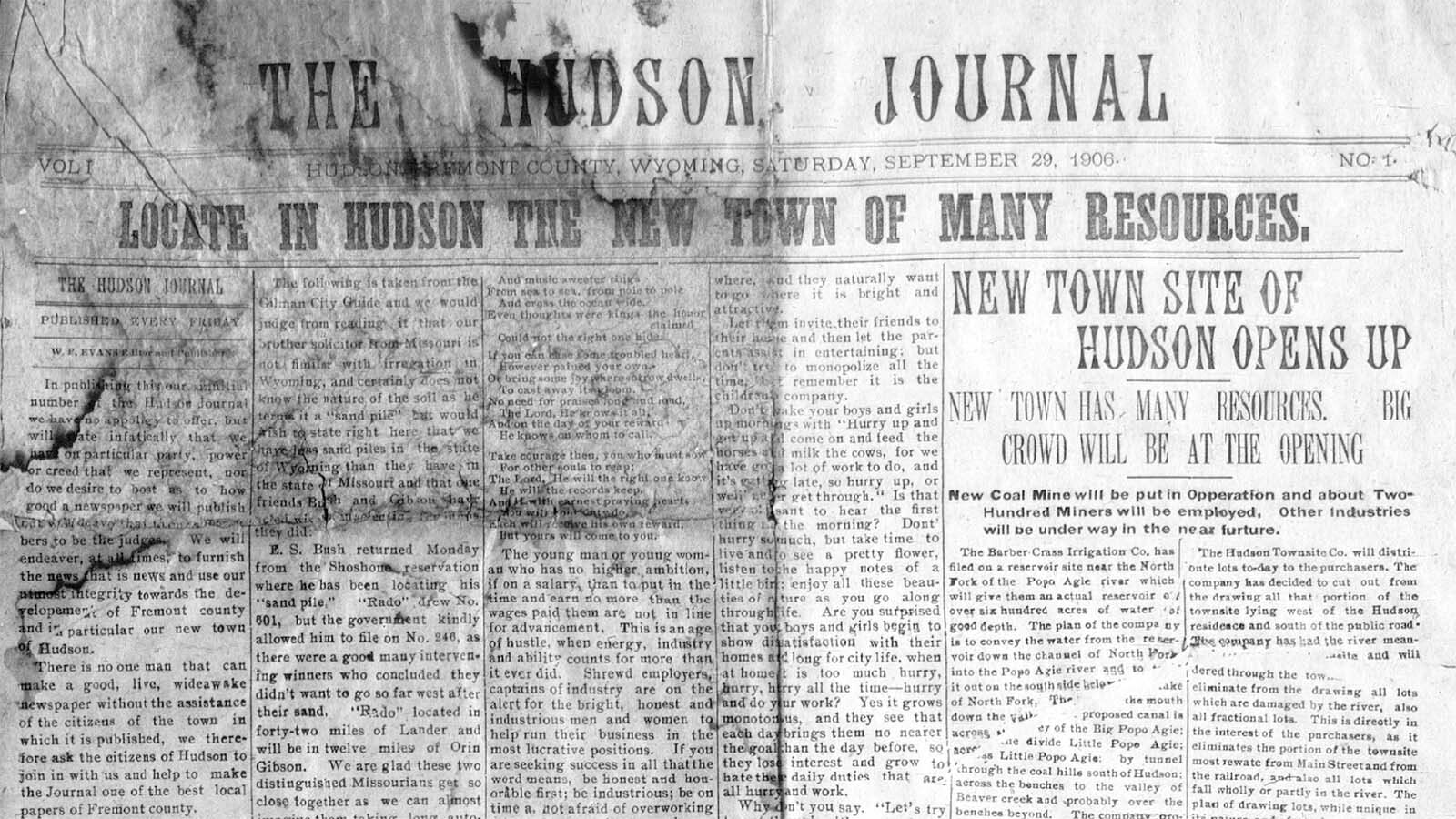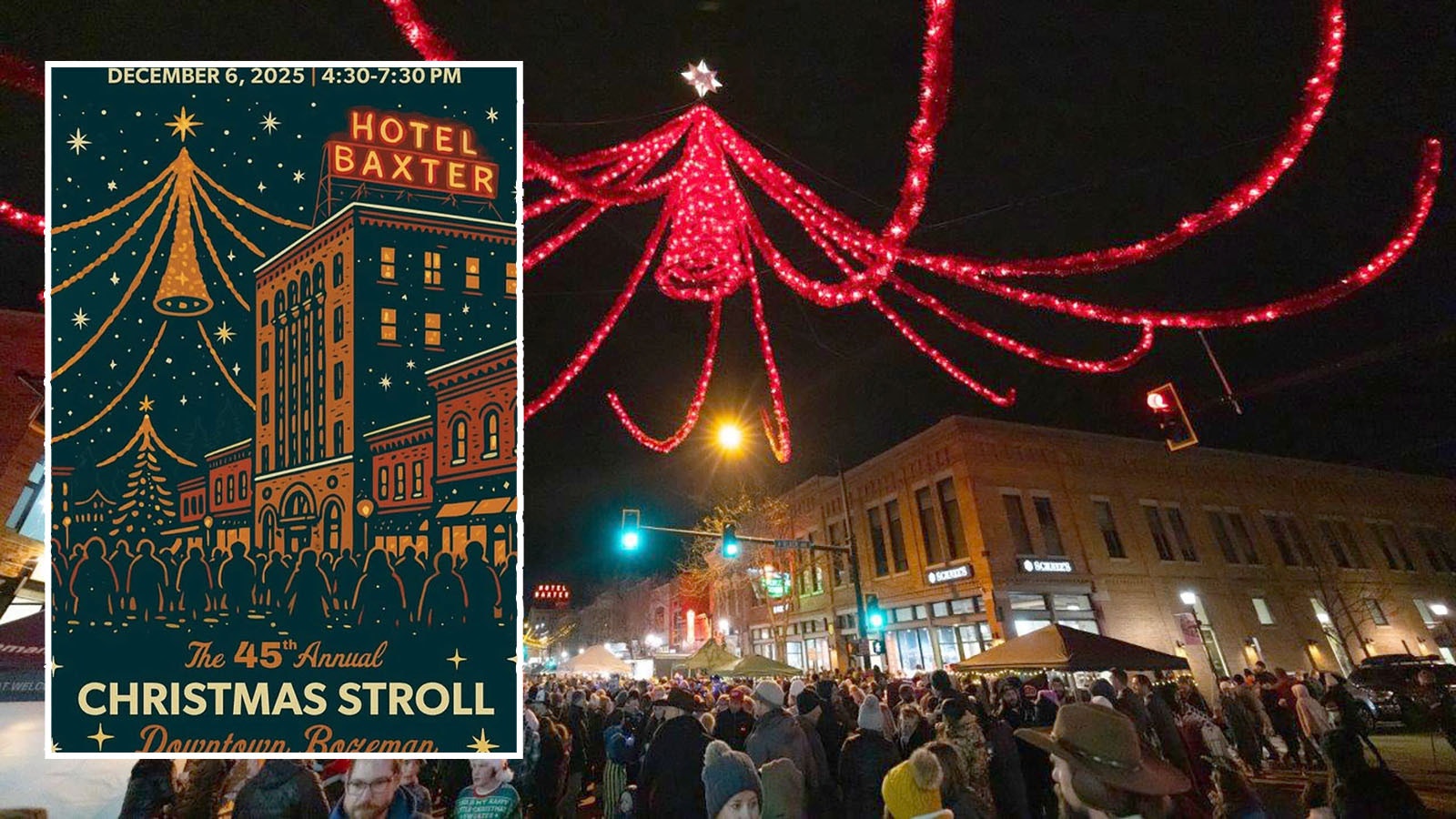Hudson, Wyoming, situated between Lander and Riverton, had a reputation as one of the wildest towns in the region. From its founding in 1906 and late into the 1960s, it was known as the place to go for a good time.
Founded as a coal mining town, Hudson grew quickly over the next two decades and attracted mostly single men who worked and played hard. When Prohibition struck in 1919, the action literally went underground, although the bars only advertised "soft drinks."
In an interview in the 1990s with Mark Junge, longtime resident Sophie Svilar recalled the pandemonium of those early days when several wagon mines and a couple of big mines attracted men from all over the world.
“At one time, there were 700 coal miners here,” Svilar said. “My folks ran a boarding house, and mama had as high as 30 and 40 boarders.”
Svilar said that the miners would sleep in shifts and two would share one bed that way. Her mother would fix lunch pails for the miners, and it was always chaos as her mom would try to keep track of the boarders and her children.
“Some of the miners dressed pretty nice,” Svilar said, remembering all the washing and ironing her mom did. “They worked in the day, and they'd go out at night.”
With a big population of single men, the saloons, one owned by Svilar’s dad, were kept busy.
“Hudson was wild,” former mayor of Hudson Mike Anderson said. “The town had a lot of bootleg booze, especially after the mines were shut down.”
The Sporting Club
Before being forced out of business over half a century ago, Gracie's was one of the liveliest businesses in Hudson. This “sporting club” boasted eight rooms and was owned by Madam Grace Ball.
Historian Tom Lawrence said that Hudson had more “rentable women” than both Riverton and Lander combined. While several good restaurants and bars added to the local economy, the “Love Markets” were the main attraction.
“They kept Hudson on the map,” Lawrence said. “The men who lived in Hudson that didn’t want to chance being caught, went to the Yellow House in Riverton or the Blue Goose in Shoshoni.”
Gracie's, the most visible of the sporting houses, occupied the two-store building on the West Side of Main Street and had a hand-painted sign that said simply, “Rooms.” It was considered the best place in town for many years, and Ball normally had about eight girls working for her.
A former customer of Gracie’s told Lawrence that when he was young and single, he was well-acquainted with Gracie and her girls.
“Sometimes in the afternoon, I would take all of them home and cook spaghetti for them,” the anonymous customer said. “The girls were always happy to get away from ‘work’ for a little while, and they would show their appreciation for a week or two.”
This arrangement came to an end when his parents discovered what he was doing.
Gracie’s had a big flat roof over the front door where people could sit underneath in the shade. The girls on the second floor were known to often stand on the roof in their “Naughty Nighties” and wave at the men driving down the street as a way to attract customers.
Prohibition Raids
When the mines began closing in the late 1920s during the Prohibition years, many of the enterprising miners survived through bootlegging.
According to historian G.B. Dobson, one out-of-work miner, Carmelo Rotolo, was arrested for the illegal possession of a still in 1927 when law enforcement became suspicious of him as they conducted another bust in Hudson.
“His excuse was that with no work in the mine, it was the only thing he could do,” Dobson said.
An individual in the crowd watching the first arrest said, in the hearing of one of the officers, "There he goes to tip Tony off."
The deputy then watched as an individual went over to Rotolo's house. Rotolo was observed having a conversation with the informant and promptly went to his shed. As the deputy quietly watched, Rotolo soon emerged with parts of a still, implicating himself in bootlegging which led to his immediate arrest.
By the late 1920s, Madam Grace Ball had moved on from Hudson and by 1927, was herself arrested for selling beer. She was fined $90 and disappeared into the shadows of history. However, she had left behind her name and her "Rooms for Rent" continued to operate under the name of Gracie's.
End Of An Era
The last of the wagon mines closed in 1941, but in the 1950s, a revival occurred in Hudson, and the town maintained its wild and woolly reputation.
“In the late '50s and early '60s, Hudson received a new life,” Anderson said. “This is supposition on my part, but when U.S. Steel came in, there was a need for entertainment.”
It was also during this time that Gerry Spence, the Fremont County prosecutor, decided to shut down all the prostitution in the county.
“Gracie's closed down and was abandoned,” Anderson said. “We would break in there, and there still were still beds and stuff in the rooms, but it was shut down.”
As for Spence, Anderson said the lawyer learned a lot from that experience and found out the hard way that not everyone was pleased to have Gracie's shut down.
“Somebody took a pot shot at him over here in Hudson,” Anderson said.
Although the brothels were no longer in business, the illegal poker games continued to thrive in Hudson. Anderson worked as a busboy when he was just 13 years old, making sure that the patrons of the games were taken care of.
“There used to be a way to drive underneath the El Toro building,” Anderson said. “This was the best way to get to the poker games and for them to park their cars out of sight.”
As a young teenager, Anderson would have to go down the trapdoor to where the games were being conducted and haul booze to the players in the basement.
“They had a little knotty pine table and a poker table,” he said. “Business was good.”
Over time, these poker games ended and today, remnants of the wild days of Hudson are all that is left behind in this small frontier town. As folks drive through, they can still see the painted “Room” sign on Gracie's, mute evidence of the crazy times that were once for sale in Hudson, Wyoming.
Jackie Dorothy can be reached at jackie@cowboystatedaily.com.














